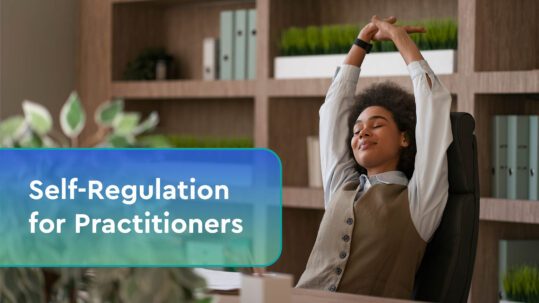School-Based Telepractice for Occupational Therapy
Administrating and supplying occupational therapy services within a school system is challenging. There are a lot of barriers to overcome that inhibit children from receiving proper care. With the advancement of technology, more and more children are accessing occupational therapy through alternative methods. While students with individualized education plans need to be able to access therapy, many schools have trouble finding an occupational therapist to do so (Muller, 2009). By using telepractice methods, occupational therapists can provide school systems access to specialized occupational therapy regardless of their location.
How does this Work if an Occupational Therapist is Mainly Hands-on?
Instruction of therapy and consultation by an occupational therapist is possible through the introduction of an eHelper. An eHelper can be used to facilitate and guide the hands-on portion of occupational therapy.
Is Telepractice Occupational Therapy really Effective?
Consultation by an occupational therapist, even while remote, have been positive in assisting students, schools, and family members. Remote occupational therapists can help provide strategies to help a student overcome academic difficulties faced in and out of the classroom (Bayona et al., 2006; Casillas, 2010; Dreiling & Bundy, 2003; Dunn, 1990). The American Occupational Therapy Association (AOTA) recognizes telepractice as an acceptable and effective method of providing occupational therapy. AOTA understands the need for students who live in remote areas where occupational occupational therapy services are scarce in the community (American Occupational Therapy Association [AOTA], 2010). Research has been conducted on implementing telepractice occupational therapy services. For example, Criss (2013) explored the use of telepractice delivered occupational therapy for students ages 6-11 years of age for the improvement of visual and fine motor skills that impact handwriting.
The Study
In the Criss (2013) study, 8 students (5 males, 3 females) completed 8 sessions: 1 pre-test session, 6 telepractice occupational therapy sessions, and a post-test session. Students had an eHelper, which was often their mother who assisted with the telepractice sessions. Pre-test sessions included an assessment of fine motor skills and handwriting using a specialized handwriting assessment tool. The 6 telepractice occupational therapy sessions consisted of interaction with a remote occupational therapist via webcam while the student performed biomechanical, kinesthetic, and multisensory exercises to remediate handwriting deficits. Each telepractice session lasted 30 minutes and occurred once a week. The post-test session included the same handwriting assessment given during the pre-test session in addition to a satisfaction questionnaire that was given to both the student and eHelper to assess the success of the program.
The Results
The study found that students who received the telepractice occupational therapy intervention improved their handwriting in regards to student’s memory of letters, the orientation of letters, the placement of letters, the size of letters, and their control of writing. Students improved their handwriting by an average of 6%, which compliments the existing studies on the efficacy of telepractice methods for occupational therapy (Criss, 2013). Both the students and eHelpers responded highly favorable to telepractice occupational therapy sessions.
What Does This Mean for the Future of Occupational Therapy?
It means that occupational therapists may want to consider adopting a telepractice model of occupational therapy service in addition to or in place of in-person visitation. The ability to provide telepractice services allows the occupational therapist to reach a greater number of students. It also increases the availability of occupational therapy to children in remote areas or situations that would inhibit them from attending an in-person visit.
Conclusion
Geological barriers are no longer going to hinder a student’s access to occupational therapy. The ability to provide telepractice occupational therapy serves many benefits for students, families, and school systems who have difficulty finding qualified occupational therapists in their community. Occupational therapists can learn how to set up an online practice in their country, as there are many guides available to occupational therapists by professional associations in addition to literature reviews done by researchers.
Sources
American Occupational Therapy Association. Telerehabilitation position paper. American Journal of Occupational Therapy. 2010;64:397–405. [Google Scholar]
Bayona CL, McDougall J, Tucker MA, Nichols M, Mandich A. School-based occupational therapy for children with fine motor difficulties: Evaluating functional outcomes and fidelity of services. Physical and Occupational Therapy in Pediatrics. 2006;26:89–110. [PubMed]
Casillas D. Teachers’ perceptions of school-based occupational therapy consultation: Part II. Early Intervention & School Special Interest Section Quarterly. 2010;17(2):1–4. [Google Scholar]
Criss, M. J. (2013). School-based telerehabilitation in occupational therapy: Using telerehabilitation technologies to promote improvements in student performance. International journal of telerehabilitation, 5(1), 39.
Dreiling DS, Bundy AC. Brief report—A comparison of consultative model and direct-indirect intervention with preschoolers. American Journal of Occupational Therapy. 2003;57:566–569. [PubMed]
Dunn W. A comparison of service provision models in school-based occupational therapy services: A pilot study. Occupational Therapy Journal of Research. 1990;10:300–319. [Google Scholar]
Muller E. Serving students with disabilities in state-level virtual K-12 public school programs. 2009. Retrieved from









